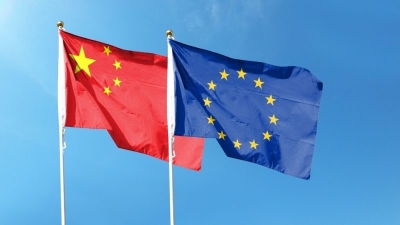EU ETS extension could have devastating impact on low-income households

The proposed extension of the EU’s carbon market rules to transport and heating fuels could have devastating social impacts on low-income households heavily reliant on fossil fuels for heating and transportation, and the ‘Social Climate Fund’ may be insufficient to address these social consequences, argues Anna Bajomi.
On Tuesday (18 April), the European Parliament approved the inter-institutional agreement of 18 December 2022 on the proposed extension of the Emissions Trading System to Buildings and Road Transport.
Under this proposal, a new ETS is set to start across the EU as of 2027. While the EU institutions have set a maximum carbon price of €45 per ton of CO2 emissions, experts warn that this price may well be exceeded despite the price-dampening mechanism.
This decision could have a devastating social impact, particularly for low-income households heavily reliant on fossil fuels for heating and transportation.
The price cap mechanism included in the law is an insufficient safeguard to ensure a socially fair energy transition.
This reform is on course to exacerbate existing inequalities and deepen the divide between those who can afford to transition to cleaner energy sources and those who cannot.
Furthermore, negative social impacts of carbon pricing go beyond the increased burden of fossil fuel costs.
In some Central and Eastern European countries, like Hungary, Bulgaria, and Romania, firewood is the dominant heating source of the poorest households; in Hungary, nearly half of the households in the lowest income quintile heat their home entirely with solid fuels, mostly firewood.
Firewood heating is a major contributor to renewable energy targets and air pollution. Increasing gas prices push households that have the flexibility to switch to firewood as an alternative heating fuel.
But the increased demand pushed up firewood prices dramatically; in just one year, the price of firewood doubled in Hungary. Future carbon pricing will most likely indirectly further increase firewood prices.
Skyrocketing firewood prices devastate the most vulnerable households with no other alternative for heat, as they have no access to gas or district heating, and electric heating is not affordable for them.
Domestic firewood prices are currently not monitored at an EU level and are not planned to be capped under the ETS mechanism.
Soaring costs of fuel of the poor is an additional damaging social impact that must be prevented. Future carbon pricing will most likely indirectly further increase firewood prices.
The proposed ‘Social Climate Fund’ to mitigate the social impacts of the transition towards a low-carbon economy will be insufficient to address the social consequences of the ETS extension.
Without significant investment in measures to protect and support vulnerable populations, the transition to a low-carbon economy will not only leave behind those who are already struggling the most but also contribute to increasing the divide.
FEANTSA urges the EU and Member states to set the conditions to provide clean, efficient, and affordable heating solutions for the most vulnerable households.
Reducing energy needs and the poorest households’ dependence on carbon and outdated heating methods should happen as soon as possible before carbon pricing enters terms.
By setting up a Cold Homes Fund, the EU can allocate sufficient and targeted funding for renovations for those who need it most, with additional social and technical support.
The Cold Homes Fund could distribute funding from EU structural funds, ETS incomes (ETS 1 and a higher share of ETS 2), the Social Climate Fund in the future, and additional resources such as contributions from multinational companies that profit from the transition to a green economy.
Member states could use the Cold Homes Fund to implement energy efficiency programs that cover 100 per cent of the upfront cost of the energy-efficient retrofits of homes of low-income households.
Poorest households are often excluded from mainstream green financing. The Cold Homes Fund could bridge the financing gap by ensuring that the poorest families receive the highest share of public investment.
However, the share of non-repayable funding from the Cold Homes fund should decrease as income increases.
This can improve the housing conditions of the poorest households, help reduce their carbon emissions, and contribute to a broad political endorsement of the green transition.
Besides the insulation of homes, the transition to low-carbon and affordable heating technologies should also be supported.
Firewood users, often not eligible for decarbonisation programs, should also be strongly supported in upgrading their obsolete and polluting heating devices to modern heating systems.
Development of the most disadvantaged regions shall also reduce transport inequalities by providing quality public transportation. Subsidised electric car acquisition shall be targeted at the poorest.
A socially fair transition requires active multi-level planning and governance. Well-designed local, regional, and national plans should facilitate the renovation of worst-performing dwellings and show affordable alternatives to polluting and carbon-emitting energy use.
To ensure that vulnerable households are involved and served first by renovation and heat transition programs, adequate funding, along with active social and technical support, is necessary.
The renovation of worst-performing dwellings and implementation of energy savings among vulnerable households are foreseen in the Energy Performance of Buildings Directive and the Energy Efficiency Directive.
Implementing these directives should support decarbonising the poorest households before the carbon tax comes into force.
Only by systematically supporting and protecting vulnerable households can we secure that the ETS2 will not deepen social inequalities and redeem the promise of a transition that leaves no one behind.



